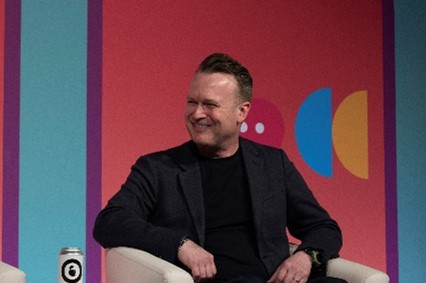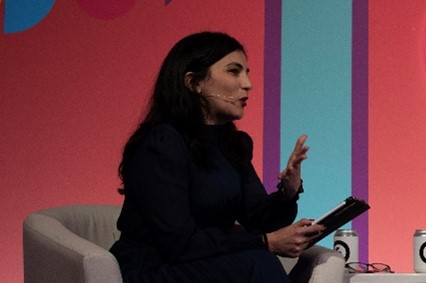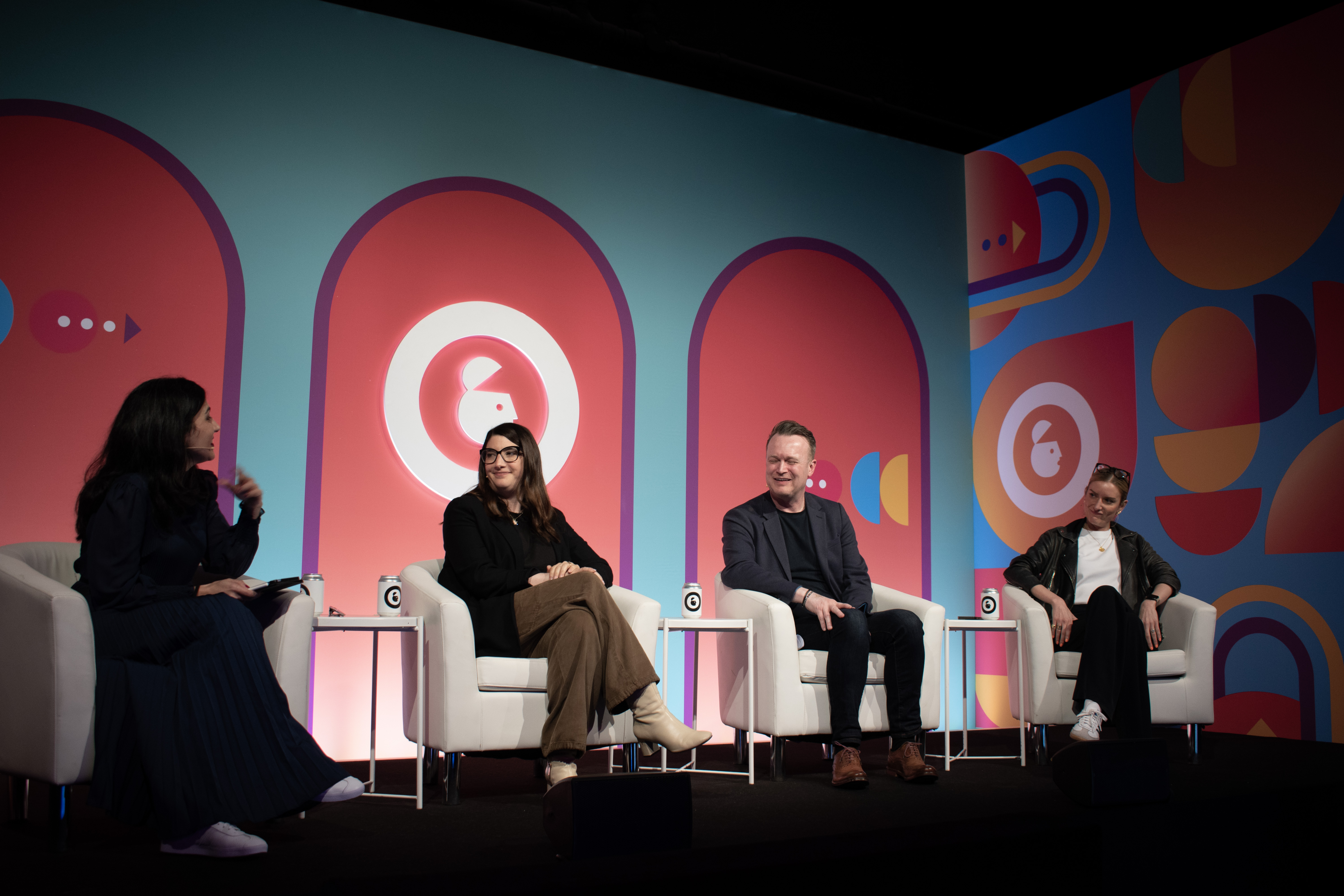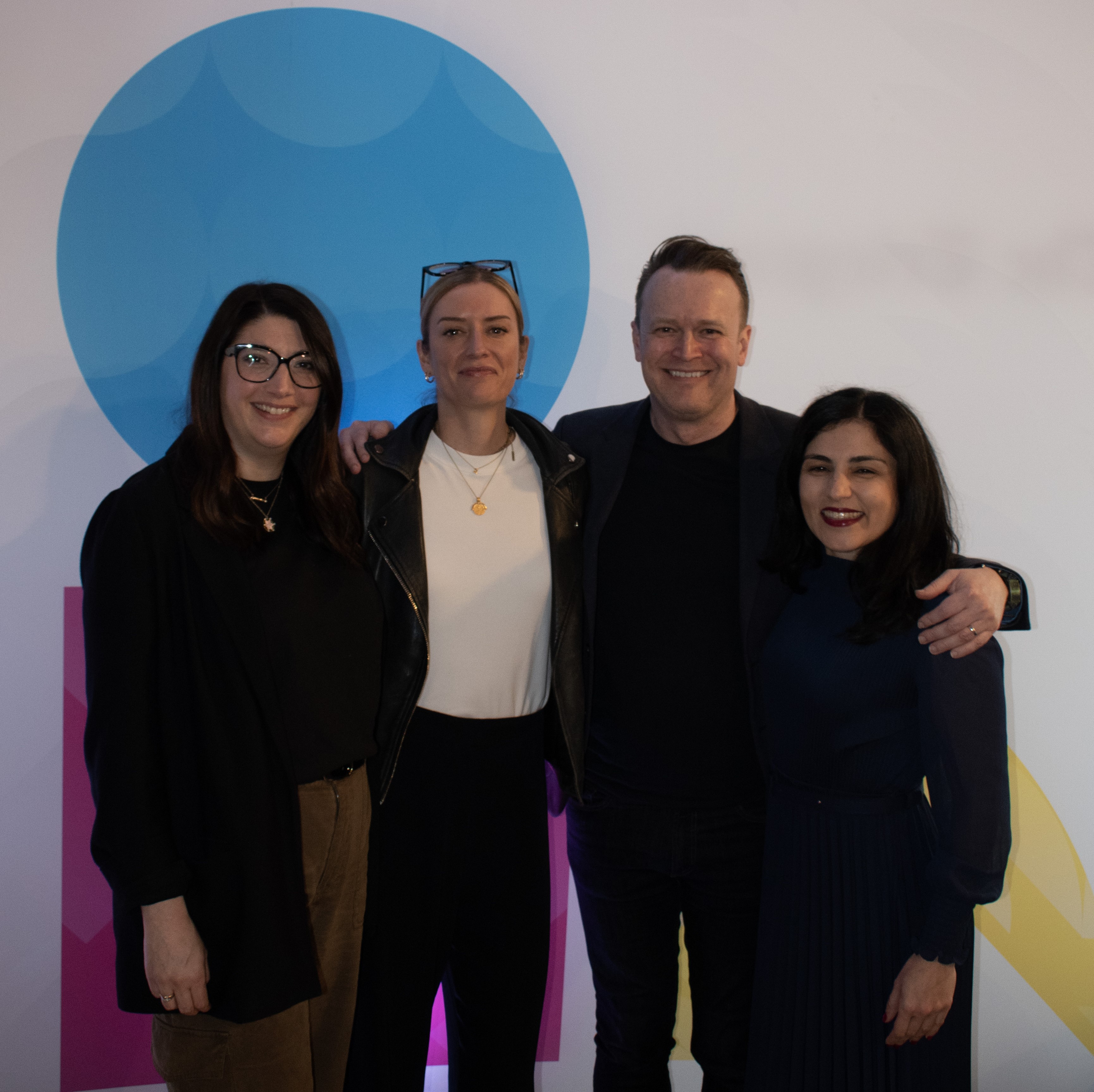Advertising Week Europe celebrated its 10th anniversary in May 2024 at 180 Studios in London. Together TV’s Head of Marketing, Francesca Aita, hosted an insightful panel with ITV’s CMO Jane Stiller, BBC’s Director of Marketing and Audiences Paul Davies, and Channel 4’s Interim CMO Katie Jackson to discuss how their marketing strategies have evolved with the ever growing digital audience to achieve record ratings for shows like Mr Bates vs the Post Office, The Traitors and The Jury: Murder Trial.
Francesca Aita, Head of Marketing at Together TV: Jane, you lead marketing at ITV. Let’s start with one of the recent successes, Mr Bates vs the Post Office, from your perspective. It created a national conversation, both in terms of viewership and also spurring government action. With over 15 million viewers, what's your approach to balancing digital first ambitions with linear first flagship events?
Jane Stiller, CMO at ITV: It's probably fair to say a show like Mr Bates vs the Post Office doesn't come along that often and we're super proud of it. We had no idea it was going to be as big as it was, both in terms of viewership, but also in terms of the action that it's driven.
I think what's really interesting about the show is that it had a big live audience. It launched on New Year's Day, and about 3 million people watched it live. But I think what was really interesting is over the course of the next seven days, as the press picked up and the buzz around it grew that audience tripled in that first week alone. As you said, it has now gone on to multimillion viewers.
The world of live TV and streaming is now just one big world of trying to get the biggest audience possible. Viewers are watching in completely different ways. Some of them are watching on their phones on the way to work. Some of them are watching on a massive cinema screen in their home. And as broadcasters who want to be able to reach the highest number of people possible, for us, it's about picking the right content and delivering it to people in the right place in the way they would watch it.
Which is why, for us, streaming and broadcast doesn't feel like a big distinction. It's just about how do you deliver to a really big audience in a way that is useful, in our business, for advertisers. And that might be through mass simultaneous reach, or it might be through delivering targeted video-on-demand advertising through our ITVX streaming platform. For us, it's just how do you get the biggest audience possible?
Francesca: Paul, you’re the Director of Marketing and Audiences at the BBC. Lately, we’ve seen the successes of very different shows The Traitors, Gladiators and very recently Race Across the World. They have demonstrated that entertainment shows can still attract huge audiences to TV. How do you make these series relevant to audiences of all ages?
 Paul Davies, Head of Marketing and Audiences at the BBC: Thank you for talking about Gladiators. We're really proud of that show as well. And I think it's a rare show because it's a show that reaches a family audience that come together. Parents that saw it the first-time round are on the nostalgia trip and they're now able to show it to their kids who get to know the brand for the first time.
Paul Davies, Head of Marketing and Audiences at the BBC: Thank you for talking about Gladiators. We're really proud of that show as well. And I think it's a rare show because it's a show that reaches a family audience that come together. Parents that saw it the first-time round are on the nostalgia trip and they're now able to show it to their kids who get to know the brand for the first time.
To answer your question, it all comes down to marketing strategy. We recognise that there's a huge amount of choice now for audiences to go and watch more than they ever have. Our job changes with that and advertising is great at driving awareness of our shows. But what we really want to do is try to drive talkability as well because that pushes audiences into the consideration set and ultimately into choosing what to watch. That's our strategy, it’s how we drive talkability on shows and to bring it to life.
The Traitors is a great example. After season one we recognised that we had a fan base who absolutely love the show and we wanted to set them on fire. A good example of a small tactic we did before we announced that The Traitors is coming back for a second season is that we dropped a hooded traitor behind Claudia in Strictly [Come Dancing] on a Saturday night. We knew that not many people would spot it, but the fans would. And of course, the fans spotted it, and the media picked it up. Little things like that we're starting to play with, generating a buzz and an interest around shows.
A bigger example is for Doctor Who, which we rebooted last weekend. Again, we've had a really carefully constructed plan about what we released when, so did a countdown to the trailer, then the trailer, and then we released episode titles. Believe it or not, “Whovians” [Doctor Who fans] love the release of episode titles. We love our Whovians! We're really careful about how we manage our fanbases and what information we seed out, it's very well thought through.
And then Gladiators is an example where we didn't invest in marketing until we knew how the show was performing because it’s quite a gamble. You never really know how an audience is going to react, but very quickly it was clear. The audience loved it, we had a hit on our hands.
So, we toured the Trafford Shopping Centre in Manchester with six Gladiators. It’s an enormous centre and the reaction was incredible. It blew our minds; we had queues snaking around the Trafford Shopping Centre. We had to stop the queue four times because we were mobbed. We ran out of foam fingers! All these sorts of things are designed by us thinking about how you drive talkability.
Francesca: Katie you are Interim CMO at Channel 4, having previously led 4Creative as well. Channel 4 delivered its biggest ever month of streaming in March and April with a 40% year-on-year increase and 6.9 billion viewer minutes, boosted by young viewers and hits like The Jury: Murder Trial that got the nation talking. But there is something very relevant for the audience I want to ask you about, which is the upcoming Paralympics.
Channel 4’s Superhuman campaign fundamentally shifted the public perception about the Paralympics and also elite disabled athletes. How is the positioning of the Paralympics changing and evolving? And what do you think the big events, like this one, can do for Channel 4?
Katie Jackson, Interim CMO at Channel 4: I'm afraid, despite the hashtag #SpillingTheT, I cannot disclose what the Paralympics campaign is going to be this year, so apologies for those of you who wanted to get some insight into that. Firstly, I think the Paralympics legacy that Channel 4 has created is extraordinary. Back in 2012, when we first launched Superhumans and when the Paralympics was in London, I think we managed to deliver about 12 million viewers to the coverage. Fast forward to August 2021 in Tokyo, that number increased to 20 million and that increase alone just shows the impact that both the coverage and the campaigns that we've delivered over the years have had on the public perception around disability. All really impressive and no small feat to try and target this time round.
The question around the brand positioning never changes really for us: we know creativity is the number one profitability driver after brand scale. So, it is our opportunity to be the most creative that we can possibly be. There's no small coincidence that some of the advertising campaigns we’ve created for the Paralympics over the last three iterations have all been incredibly well-crafted pieces of work and highly awarded. Famously, we talk about a difficult second album, but a fourth album is an entirely different thing. We hope we can repeat that this year and I think audiences respond to that. The bravery, the boldness and the risk that it takes to really cut through creatively with a message to audiences around why it's important to support to disabled sport is what we're all about. So, we feel really excited about that this year.
Francesca: Lockdown demonstrated that TV can still bring the nation together and viewing is progressively spreading across different platforms like streaming, social media and gaming. We’ve touched on it, but I would like to dig deeper, what can we do as marketers to bring audiences together for major events whilst demonstrating our public service broadcasting value?
Paul: If I look ahead to the summer, there's a lot of events coming. The BBC have Radio 1’s Big Weekend, Glastonbury, the Euros, the Olympics, Wimbledon…There are a lot of live moments where our audiences will come together. We think of them as an opportunity to take a live audience and to give them a proposition around iPlayer and around watching for digital on-demand service. We think, what have we got in our arsenal that gives them a reason to watch on iPlayer rather than through a signal? And there are some really good reasons.
Like Glastonbury, you can watch pretty much any stage. Last summer’s iPlayer experience was almost better than going to Glastonbury itself. Almost, not quite. You don't get the mud. But it's really good. Or Wimbledon where, if you’re really into tennis, you can flick between every court. Those sorts of propositions around live are interesting to us and how we use our digital platforms to pack it up differently for audiences.
 Francesca: Absolutely, and it’s about how technology can enhance the experience.
Francesca: Absolutely, and it’s about how technology can enhance the experience.
Jane: What Paul talked about earlier around talkability is very important. When you watch a piece of content and you love it, you want to share it with people. We've seen that across the board, not just from broadcasters, but from streamers as well. Baby Reindeer is huge at the moment. Everyone's talking about it. We're going to have loads of shows like that. Mr. Bates kicked off the year as a big one. It's inherent when you have an amazing piece of content you want to talk to other people about it. Our job as people who distribute content to hundreds of millions of people is to find ways, exactly what Paul talked about, to make it easy for people to talk about it, to spar conversations.
If you think about Love Island, lots of people talk about it. We spend a lot of time thinking about what we are providing for our super fans. We do “first look” every single day. We make sure that we distribute loads through social platforms. We invite content creators to the villa so that they can experience Love Island themselves and have the experience that they're then posting content about. Once the series is live, they've actually felt it and they've experienced it. It's finding those moments when you know you've got a big show that loads of people want to talk about. It's finding the way for fans to talk and live it. Be that through the iPlayer, ITVX or the 4 streaming platform. There are loads of different ways of doing it. But I do think it's important that we provide the opportunity for people to talk about content in ways that they want to. Because people love great shows. People do! It's a privilege to work on those shows.
Katie: I might go one step further and say it's about creating the moment of conversation rather than just necessarily facilitating it. Talent plays a key role when we think about live TV, both in terms of presenter line up but also, key celebrity talent and influencer talent. Joe Lycett just picked up a BAFTA hosts Lycett Live, which is on Channel 4 at 10:00 PM on Fridays. He creates huge talkability just by virtue of the fact that he has a big audience.
We've also just announced the election coverage line up. We're bringing in Alastair Campbell and Rory Stewart from the Rest Is Politics. We are cross pollinating audiences who already create conversation between themselves to try and leverage what we can do to build brilliant moments around live events, and I think talent is really important for us to consider moving forward. I think what Jane and ITV are doing with ITV Insiders is brilliant. Talent is a real untapped opportunity and something we need to continue to focus on.
Francesca: Together TV exists to inspire positive change and our viewers specifically are semi-retired or retired coming from rural lower income households. They love traditional telly, and they are years away from being digital only or digital first. We're very close to our audience and I know this is something they could be affected by quite a lot. How can we as marketers help bring these audiences on this digital journey over the next decade?

Jane: One thing I would say is that it's dangerous in any marketing context to think of something as traditional and something as new. It's also dangerous to think of digital as new and traditional as old. We’ve talked a lot about trying to create big moments and big shows that everyone enjoys. All demographics should be included in that, and if you think about us as an advertising platform, it's our duty to provide advertisers with every single audience. Because us brands want to target all sorts of different demographics and that's our job. You've got to put your best foot forward in terms of commissioning and creating shows that everyone wants.
From a marketing point of view, we've got a responsibility to not always focus on the 16-to-34s and try to build big moments that everyone comes in for. Speaking from ITV, we can provide that platform for advertisers. Personally, the word tradition can have the wrong connotations.
Paul: Building on that, we use the phrase “clutch control” a lot internally where we think about a live audience and an on-demand audience. We think about the younger audiences that will watch more streaming than they do watch on-demand. An older audience watches more live than they do on-demand. There's a dichotomy, a tipping point between the two so we call it a clutch control about how we manage it.
What always interests me is that the most watched show on television is the 6:30 PM regional news and weather. It draws the biggest audience, and it always surprises people! But if we think about our demographic, older people significantly watch more telly than younger people. So, if you take the total universe of viewing, it still is mostly live than it is on demand.
Katie: Freely is a good example of what we're doing to try as broadcasters to come together and think about how we can provide all audiences, regardless of their age, with a live and also an on-demand proposition. Freely is a new service that's come to market and it's BBC, Channel 4, ITV and Channel 5, all coming together to provide the experience through the Internet because realistically penetration of smart TV is continuing to grow. I like the word that Jane chose; it is dangerous to start to view these audiences in a binary way. Co-viewing is a reality, but also the way the market is moving at the moment means older audiences are starting to move into smart TV world. If we're able to provide them with our own content, then that's brilliant. I think we're doing a good job with that.
Francesca: A question from the public: With iPlayer, Channel 4 streaming, and ITVX now established. What insights can the panel share about how brands can now get more insight into show format performance?
Jane: ITV have a commercial team who provide a lot of that insight out into the market through agencies. There is also huge value in having direct relationships with us at ITV. We know that the hot shows that are coming up. We also know the demographics of each show, to be able to say, when you are around and looking for a certain partner, you want a certain thing. We're able to provide a lot of that by having a direct relationship. There are some lovely examples of where we've done ad funded content that's performed really well. “Cooking With the Stars” is a big M&S show that we've been doing for a number of years now, it really performs brilliantly and is a great example of really close collaboration.
In terms of getting the performance stats, we provide a lot of that. But again, if you want to be, closely partnered with the show and deeply integrated into it, it's those close relationships and knowing what's on the slate. For Love Island we have numerous different commercial partners. But they are really deeply embedded within that show. They go to the villa; they genuinely understand the DNA of the show and we can create unique sponsorship opportunities through all different facets of the show. That’s what comes from really close collaboration. We've got great shows, great formats coming up that there is that opportunity on and it’s just making sure that you're close to us and to be able to get involved at the right stages.
Francesca: How do you manage to balance the over personalisation of different demographics and at the same time creating bigger massive cultural moments?
Katie: With difficulty. Personalisation always plays its part. For instance, we look at running tests on how we personalise your “watch next” experience when you're on product and we see huge conversion increases when we start to run tests on e.g. types of shows, types of content families, types of genres that we know viewers are going to move through. However, back to the Paralympics point, nothing beats the cut through of a big, famous creative campaign that is holding a microphone up to a big famous piece of content. There is always a balance, but you can't ever compromise on creating that conversation and driving fame for the brand and for the show at the expense of delivering optimisation at the bottom of the funnel. So, it's with difficulty, but I do think both are equally as important.
Jane: I also think that the ability to personalise once someone’s come in. We know that when people come in for original content, 90% of them go on to watch something else on ITVX. But actually, that's because we've invested a lot in our metadata to be able to position the right show to the right person at the right time. There's a lot behind-the-scenes around personalisation that the viewer shouldn't see. You shouldn't know about, and it shouldn't look creepy, but behind the scenes, I think that is really important. Then, the personalisation feels natural so that when you come in to watch a big show you are then given something else that you might be interested in. I'm sure you do a lot of that on iPlayer.
Paul: There's a real tension actually in this question, which is really interesting. Look at big live moments, that's an opportunity for us because that's a mass audience who are coming in that might not traditionally come to the BBC or whoever it might be. We see that as an opportunity to retain that audience. We have a choice: do we then promote our biggest, most universal titles to that audience, or do you get more, more specific and more targeted? Presenting something much more personalised to the audiences that don't come very often, but they're a smaller slice of that whole. It’s quite a challenge. We've tested both. I have a view on it now, and perhaps I’m not going to share it amongst these guys, but we have a view on it and we're testing it out.
 Francesca: Before we wrap up, what are you watching currently and what are you looking forward to watching?
Francesca: Before we wrap up, what are you watching currently and what are you looking forward to watching?
Jane: I'm currently watching Fortune Hotel on ITVX. It's fantastic. It’s a bit like The Traitors crossed with Deal or No Deal crossed with White Lotus. It's fantastic. And I'm very much looking forward to the Olympics and the Paralympics with our partners here.
Paul: That's a great answer. I'm watching Race Across the World. That's a particular favourite of mine, a bit of armchair travel I particularly love. And then I'm also going to pass it this way from Channel 4. I'm a bit embarrassed to say this publicly. I'm going to go there, MAFS [Married at First Sight]. It’s amazing. I take my hat off to you Katie. We love it!
Katie: It’s so good, thank you for saying that. MAFS Australia just finished for those of you who may now be in mourning move onto Love Triangle. It's equally as toxic and fantastic.
We've got some great dramas coming up like The Gathering, which is a youth drama based in Liverpool all about toxic parents rather than toxic teenagers. Then, Queenie - an adaptation of the book that Candice Carty-Williams wrote, is coming up very soon. I saw a preview of the first two episodes and it's going to be a good one. So big drama coming, I’m excited!
Did you enjoy this interview? Let us know what you want to hear next with the survey below or at this link
Revisit other editions of ‘Spilling the T’ to read Managing Director of Content, Zai Bennett spilling Sky's secret sauce of success, BSLBT's Chief Executive Camilla Arnold's advice on being a 'deaf ally' and Freeview's Marketing Director, Owen Jenkinson, discussing why TV can be a force for good.


























